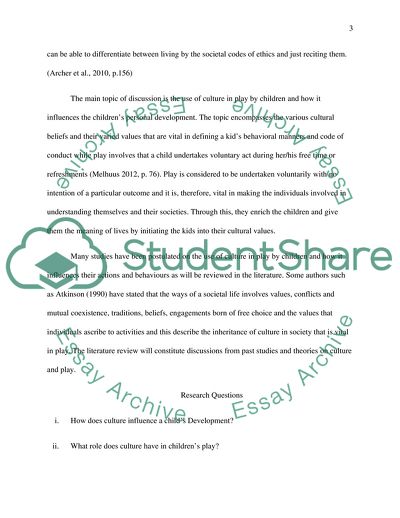Cite this document
(How Do Children Use Culture to Play Research Proposal Example | Topics and Well Written Essays - 2500 words, n.d.)
How Do Children Use Culture to Play Research Proposal Example | Topics and Well Written Essays - 2500 words. https://studentshare.org/education/1873651-how-do-children-use-culture-to-play
How Do Children Use Culture to Play Research Proposal Example | Topics and Well Written Essays - 2500 words. https://studentshare.org/education/1873651-how-do-children-use-culture-to-play
(How Do Children Use Culture to Play Research Proposal Example | Topics and Well Written Essays - 2500 Words)
How Do Children Use Culture to Play Research Proposal Example | Topics and Well Written Essays - 2500 Words. https://studentshare.org/education/1873651-how-do-children-use-culture-to-play.
How Do Children Use Culture to Play Research Proposal Example | Topics and Well Written Essays - 2500 Words. https://studentshare.org/education/1873651-how-do-children-use-culture-to-play.
“How Do Children Use Culture to Play Research Proposal Example | Topics and Well Written Essays - 2500 Words”. https://studentshare.org/education/1873651-how-do-children-use-culture-to-play.


